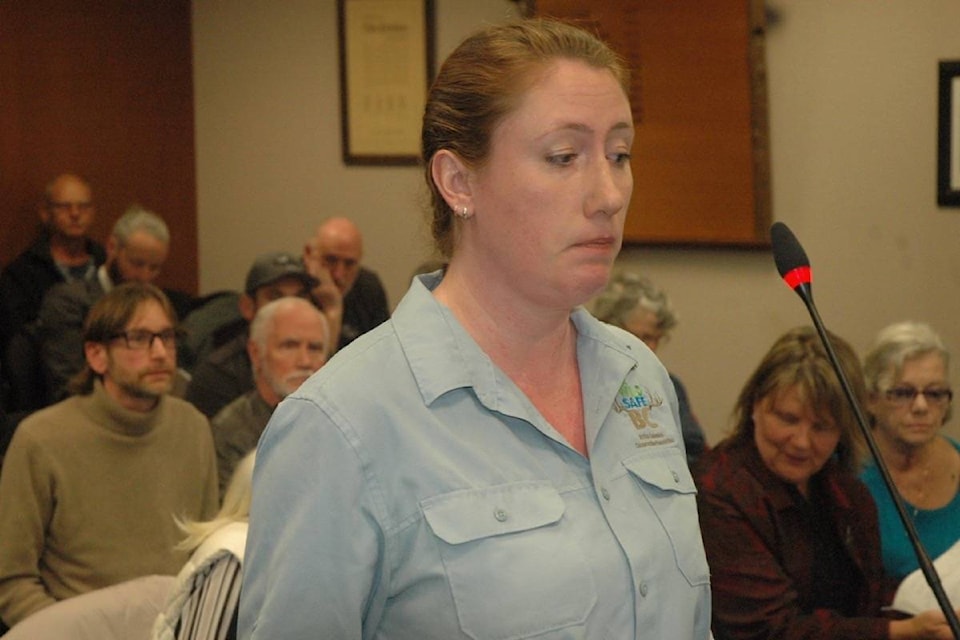As of mid-November, there have been 680 calls to conservation officers from the Cowichan Valley involving wild animals so far in 2019.
Bears eating from unsecured garbage cans left on the curb overnight awaiting pick-up accounted for a significant proportion of those calls, according to Amanda Crowston, the Cowichan Valley’s seasonal coordinator for WildSafeBC.
Speaking to North Cowichan’s council on Dec. 4, Crowston said the “hot spot” for bears getting into garbage cans in North Cowichan is the area between Quamichan Lake and Somenos Lake.
She said conservation officers had tagged 100 unsecured garbage bins in three nights in that area during a recent campaign to lessen unwanted contact between bears and humans.
Crowston said that, as a result of the warnings, there were fewer unsecured bins being left out in the area on subsequent nights.
Under the Wildlife Act, all garbage containers must be locked up or tightly secured when left outside or people can face a $230 fine.
RELATED STORY: WILDLIFE CONSERVATION OFFICERS CHECKING TO ENSURE BEAR RULES BEING FOLLOWED IN COWICHAN
“We’re continuing with our door-to-door efforts to educate people, and our bear spray workshops this year were successful and we plan to hold more next year,” Crowston said.
North Cowichan council agreed last February to join the Town of Ladysmith and the Cowichan Valley Regional District in supporting the work of WildSafeBC to reduce human-wildlife conflicts by contributing up to $3,000 in 2019 towards the work of the seasonal coordinator.
RELATED STORY: NORTH COWICHAN ASKED TO PARTICIPATE IN PROGRAM TO CUT HUMAN-WILDLIFE CONFLICTS
In response to a plea for assistance from local conservation officers in 2015, the CVRD and Ladysmith partnered with WildSafeBC to have a community coordinator educate residents, businesses and visitors on how to reduce human-wildlife conflicts.
The coordinator is active from May to November, the months with the highest potential for human-bear and other wildlife conflicts.
“We only operate in communities where we have support and we’re glad to finally bring the whole Valley together in reaching out for help in dealing with human-wildlife conflicts now that North Cowichan has joined our program,” Crowston said.
Coun. Christopher Justice, who has lived in the Quamichan Lake area for years, said bear sightings in the area were once rare, but now fairly common.
He asked Crowston if a trend was developing.
RELATED STORY: BEARS, BEARS EVERYWHERE IN THE COWICHAN VALLEY
Crowston said she’s still fairly new to the area, but it’s a fact that there is more contact with wildlife like bears as development continues in formerly untouched locations.
“A lot of times, bears learn that people put their garbage out at night and teach it to their young,” she said.
“Also, the stresses of the drier years we have been experiencing lately can sometimes drive animals out of their normal ranges to find food.”
robert.barron@cowichanvalleycitizen.com
Like us on Facebook and follow us on Twitter
